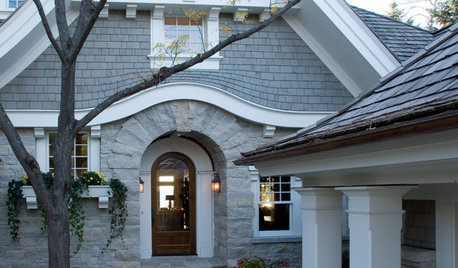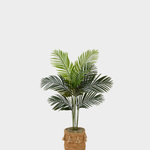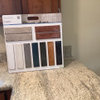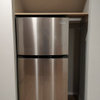Real Stone vs. Fake Stone
11 years ago
Related Stories

LANDSCAPE DESIGNIs It Time to Consider Fake Grass?
With more realistic-looking options than ever, synthetic turf can be a boon. Find the benefits and an installation how-to here
Full Story
REMODELING GUIDESSurround Your Fireplace With Tile, Brick or Stone
Freshen up your fireplace with a crisp, colorful or dramatic new look
Full Story
LANDSCAPE DESIGN5 Gravel and Stone Types for a Rockin' Landscape
Give your garden design some textural bam with pebbles, granite, river rocks and other permeable materials
Full Story
LIVING ROOMS8 Reasons to Nix Your Fireplace (Yes, for Real)
Dare you consider trading that 'coveted' design feature for something you'll actually use? This logic can help
Full Story
REMODELING GUIDES12 Ways to Add Beautiful Stone to Your Home
Rock Your House or Landscape With an Element From Nature
Full Story
REMODELING GUIDESStone Shows Massive Potential for Homes
Wait, did we say 'massive'? Scratch that. With paper-thin veneers and wide color variety, stone has left the bulk of the past behind
Full Story
REMODELING GUIDES9 Hard Questions to Ask When Shopping for Stone
Learn all about stone sizes, cracks, color issues and more so problems don't chip away at your design happiness later
Full Story
REMODELING GUIDESStar Home Facade Combo: Stone and Shingle
Forget one-note home exteriors. A facade that combines stone and shingle gives houses depth, character and curb appeal
Full Story
LANDSCAPE DESIGNThe Right Stone for Your Garden Design
Gravel, pebble, cobble and paddle: Stones vary in size and shape, and have different uses in the landscape
Full Story
LANDSCAPE DESIGNGarden Walls: Mortared Stone Adds Structure, Style and Permanence
Learn the pros and cons of using wet-laid stone walls in your landscape
Full Story









Sturgis Materials, Inc.Original Author
Custom Home Planning Center
Related Professionals
Lexington Architects & Building Designers · Saint Charles Kitchen & Bathroom Designers · South Farmingdale Kitchen & Bathroom Designers · Columbia Furniture & Accessories · Eagan Furniture & Accessories · St. Louis Furniture & Accessories · Kansas City Furniture & Accessories · Bartlesville General Contractors · Bay Shore General Contractors · Fargo General Contractors · Hercules General Contractors · Lakewood General Contractors · Mashpee General Contractors · Natchitoches General Contractors · San Bruno General ContractorsSturgis Materials, Inc.Original Author
Marlon Goden
pchow9